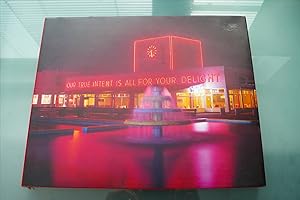Synopsis
In the late 1960s and early 1970s, postcard entrepreneur John Hinde produced a series of images of Butlin's popular holiday camps throughout the British Isles. With his trademark use of bright colors and elaborate staging, each photograph featured a large cast of real holidaymakers. These narrative tableaux of Butlin's quiet lounges, ballrooms and bars were rescued from obscurity by dedicated Hinde fan Martin Parr (who introduces the book). Both grand and humble, they are now regarded as some of the strongest images of their era.
John Hinde (1916-1998) was an important pioneer of color photography in Britain. Author of several early color photography books, he was diverted into circus management before founding the traveling John Hinde Show. It failed, and he returned to photography in 1955, conceiving a new kind of postcard--brighter and better than anything produced before. He became the most successful postcard publisher in the world, although critical acclaim only began in 1993 with a retrospective exhibition at the Irish Museum of Modern Art. Hinde's Butlin's photographs have now been exhibited throughout Europe and America.
Reviews
John Hinde (see subtitle) was a commercial photographer who specialized in color images for postcards. The Butlin of the subtitle was Billy Butlin, who had a chain of "holiday centres" in Britain that were intended to provide "the jollity and comradeship of a camping holiday, plus all the amenities of a first-class hotel" to ordinary British families. (The book's title--a line of Shakespeare's--was Butlin's business slogan.) Elmar Ludwig, Edmund Nagele, and David Noble were photographers whom Hinde assigned to capture the function rooms, playgrounds, and concessions of Butlin's centers in use by actual customers. Here, 55 of the resulting brilliant, evenly lighted frames are mounted on footwide pages, and their artistic and historical merits are maximized. They show the leisure of mainstream Britons in the centers' heyday, the "swinging" '60s and '70s, resplendently; and their technical brio is the prime topic of Martin Parr's introduction and the three photographers' appended testimonies. Anglophiles and photography buffs should rejoice in the book, but the crowded-room fascination of the pictures should enthrall plenty of nonspecialists, too. Ray Olson
Copyright © American Library Association. All rights reserved
"About this title" may belong to another edition of this title.

